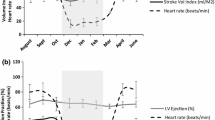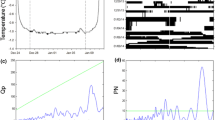Abstract
During the hibernation season, hibernating mammals show a sequence of torpor bouts that are interrupted by periodic arousals and brief normothermic periods. The functional significance of periodic arousals is still uncertain. We hypothesized that the imbalances in water economy may play a role in the timing of periodic arousals in hibernating species. We applied furosemide, a diuretic drug, to assess whether hibernating European ground squirrels respond to elevated urine production by shortening their torpor bouts. Urine production in the treated squirrels increased and led to more frequent arousals, presumably to restore water balance by recovery of lost water from blood and tissues. The length of the subsequent normothermic phase was not affected by the diuretic treatment. Body mass change correlated primarily with the amount of voided urine. Although our study did not identify the underlying mechanism, our results support the view that water economy, and water loss may play a role in the timing of periodic arousals.




Similar content being viewed by others
References
Ballard BE (1974) Pharmacokinetics and temperature. J Pharm Sci 63:1345–1358
Barnes BM, Kretzmann M, Licht P, Zucker I (1986) The influence of hibernation on testis growth and spermatogenesis in the golden-mantled ground squirrel, Spermophilus lateralis. Biol Reprod 35:1289–1297
Barnes BM, Kretzmann M, Zucker I, Licht P (1988) Plasma androgen and gonadotropin levels during hibernation and testicular maturation in golden-mantled ground squirrels. Biol Reprod 38:616–622
Becker JH (1987) Relative cold resistance of potassium cotransport and pump systems in ground squirrel and guinea pig kidney cultures. J Therm Biol 12:49–52
Brown D, Mulhausen R, Andrew D, Seal U (1971) Renal function in anesthetized dormant and active bears. Am J Physiol 220:293–298
Buffenstein R (1984) Energy and water balance during torpor and hydropenia in the pigmy gerbil, Gerbillus pusillus. J Comp Physiol B 154:535–544
Carey HV, Andrews MT, Martin SL (2003) Mammalian hibernation: cellular and molecular responses to depressed metabolism and low temperature. Physiol Rev 83:1153–1181
Daan S, Barnes BM, Strijkstra AM (1991) Warming up for sleep? Ground squirrels sleep during arousals from hibernation. Neurosci Lett 128:265–268
Fisher KC, Mrosovsky N (1970) Effectiveness of KCl and NaCl injections in arousing 13-lined ground squirrels from hibernation. Can J Zool 48:595–596
Fisher KC (1964) On the mechanism of periodic arousal in the hibernating ground squirrel. Ann Acad Sci Fenn [Biol] 71:141–156
Galster WA, Morrison P (1970) Cyclic changes in carbohydrate concentrations during hibernation in the arctic ground squirrel. Am J Physiol 218:1228–1232
Geiser F (1988) Reduction of metabolism during hibernation and daily torpor in mammals and birds: temperature effect or physiological inhibition. J Comp Physiol [B] 158:25–37
Geiser F, Hiebert S, Kenagy GJ (1990) Torpor bout duration during the hibernation season of two sciurid rodents: interrelations with temperature and metabolism. Physiol Zool 63:489–503
Humphreys M (1976) Inhibition of NaCl absorption from perfused rat ileum by furosemide. Am J Physiol 230:1517–1523
Jackson EK (2006) Diuretics. In: Brunton L, Lazo J, Parker K (eds) Goodman & Gilman’s: the pharmacological basis of therapeutics, 11th edn. McGraw-Hill, New York, pp 737–769
Kim SH, Choi YM, Lee MG (1993) Pharmacokinetics and pharmacodynamics of furosemide in protein-calorie malnutrition. J Pharmacokinet Biopharm 21:1–17
Lyman CP (1982) Sensitivity to arousal. In: Lyman CP, Willis JS, Malan A, Wang LCH (eds) Hibernation and torpor in mammals and birds, 1st edn. Academic Press, New York, pp 77–91
Malnic F, Vieira FL, Enokibara H (1965) Effect of “Furosemid” on chloride and water excretion in single nephrons of the kidney of the rat. Nature 208:80–81
Moy RM (1971) Renal function in the hibernating ground squirrel Spermophilus columbianus. Am J Physiol 220:747–753
Moy RM, Lesser RW, Pfeiffer EW (1972) Urine concentrating ability of arousing and normothermic ground squirrels (Spermophilus columbianus). Comp Biochem Physiol A Comp Physiol 41:327–337
Muchlinski AE, Carlisle AL (1982) Urine concentration by an undisturbed, naturally arousing hibernator (Spermophilus lateralis): water balance implications. J Mammal 63:510–512
Nagy KA (2004) Water economy of free-living desert animals. Int Congr Ser 1275:291–297
Németh I, Nyitrai V, Altbäcker V (2009) Ambient temperature and annual timing affect torpor bouts and euthermic phases of hibernating European ground squirrels (Spermophilus citellus). Can J Zool 87:204–210
Oklejewicz M, Daan S, Strijkstra AM (2001) Temporal organisation of hibernation in wild-type and tau mutant Syrian hamsters. J Comp Physiol [B] 171:431–439
Pengelley ET, Fisher KC (1961) Rhytmical arousal from hibernation in the Golden-mantled ground squirrel, Citellus lateralis tescorum. Can J Zool 39:105–120
Prendergast BJ, Freeman DA, Zucker I, Nelson RJ (2002) Periodic arousal from hibernation is necessary for initiation of immune responses in ground squirrels. Am J Physiol 282:R1054–R1062
R Development Core Team (2009) R: A language and environment for statistical computing. R Foundation for Statistical Computing, Vienna, Austria, http://www.R-project.org
Strijkstra AM (1999) Periodic euthermy during hibernation in the European ground squirrel: causes and consequences. Dissertation, University of Groningen
Thomas DW, Cloutier D (1992) Evaporative water loss by hibernating little brown bats, Myotis lucifugus. Physiol Zool 65:443–456
Thomas DW, Geiser F (1997) Periodic arousals in hibernating mammals: is evaporative water loss involved? Funct Ecol 11:585–591
Wang LCH (1979) Time patterns and metabolic rates of natural torpor in the Richardson’s ground squirrel. Can J Zool 57:149–155
Willis JS (1982a) Intermediary metabolism in hibernation. In: Lyman CP, Willis JS, Malan A, Wang LCH (eds) Hibernation and torpor in mammals and birds. Academic Press, New York, pp 124–136
Willis JS (1982b) The mystery of the periodic arousal. In: Lyman CP, Willis JS, Malan A, Wang LCH (eds) Hibernation and torpor in mammals and birds. Academic Press, New York, pp 92–103
Willis JS, Goldman SS, Foster RF (1971) Tissue K concentration in relation to the role of the kidney in hibernation and the cause of periodic arousal. Comp Biochem Physiol A Comp Physiol 39:437–445
Zancanaro C, Vogel P, Fakan S (1993) The bladder wall under extreme stress condition: ultrastructural observations in a hibernating mammal. J Submicrosc Cytol Pathol 25:617–621
Zancanaro C, Malatesta M, Mannello F, Vogel P, Fakan S (1999) The kidney during hibernation and arousal from hibernation. A natural model of organ preservation during cold ischaemia and reperfusion. Nephrol Dial Transplant 14:1982–1990
Zar JH (1999) Biostatistical analysis. Prentice-Hall, New Jersey
Zatzman ML (1984) Renal and cardiovascular effects of hibernation and hypothermia. Cryobiology 21:593–614
Zatzman ML, South FE (1975) Concentration of urine by the hibernating marmot. Am J Physiol 228:1336–1340
Zivadinovic D, Marjanovic M, Andjus RK (2005) Some components of hibernation rhythms. Ann N Y Acad Sci 1048:60–68
Acknowledgments
The work was supported by the Hungarian National Science Foundation (OTKA 043 711 to V Altbäcker). We especially thank Celeste Pongrácz and György Bárdos for their valuable comments and corrections.
Author information
Authors and Affiliations
Corresponding author
Additional information
Communicated by H. V. Carey.
The work was supported by the Hungarian National Science Foundation (OTKA 043 711).
Rights and permissions
About this article
Cite this article
Németh, I., Nyitrai, V., Németh, A. et al. Diuretic treatment affects the length of torpor bouts in hibernating European ground squirrels (Spermophilus citellus). J Comp Physiol B 180, 457–464 (2010). https://doi.org/10.1007/s00360-009-0426-5
Received:
Revised:
Accepted:
Published:
Issue Date:
DOI: https://doi.org/10.1007/s00360-009-0426-5




